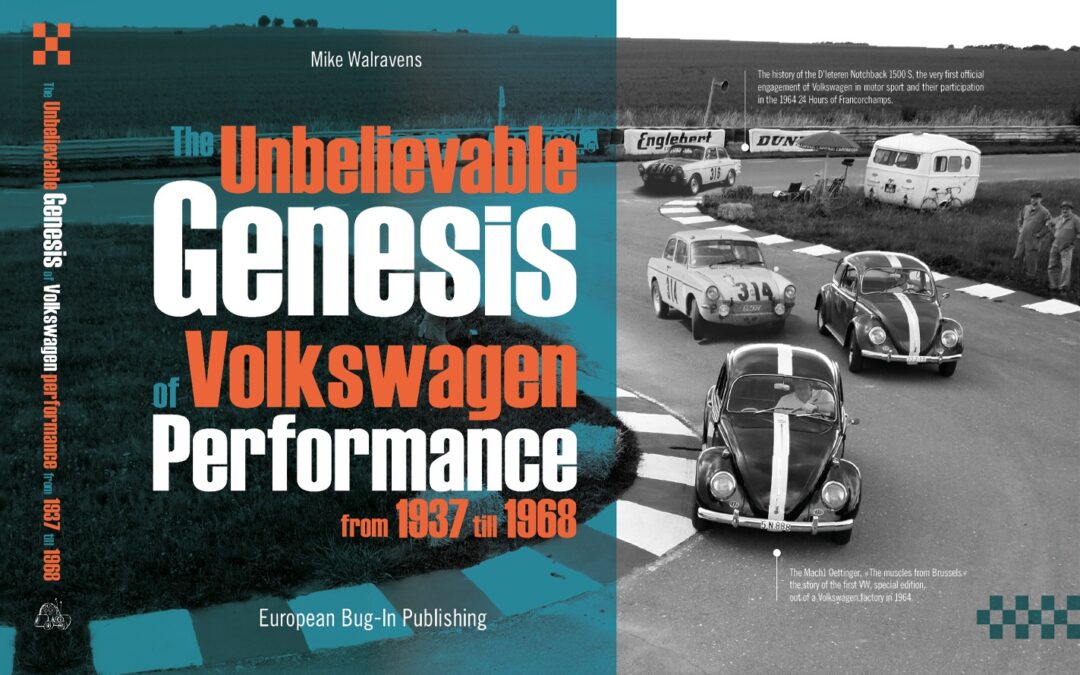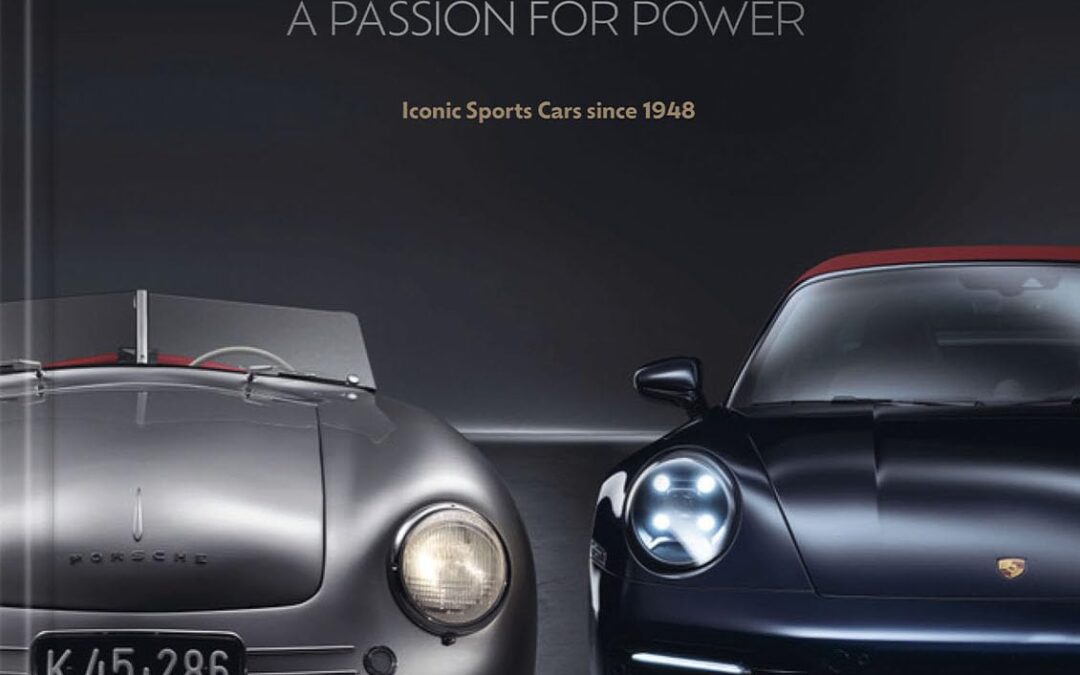
Pre-order now for early 2023 delivery
Can-Am! The words are still magic to a generation of road racing fans to whom the Canadian-American Challenge Cup series represents the pinnacle of the sport they love. And who is to argue? Taking over from the USRRC (United States Road Racing Championship), as the feature sports car circuit in North America, from 1966 through 1974 the world’s best drivers and the world’s best racing teams put together cars that followed the rule of the Can-Am series: no rules! Anything went, as long as it had two seats and enclosed wheels. These “rules” set the stage for years of ground-and-pulse-pounding cars powered by bigger and bigger engines and daredevil drivers competing in front of motorsport’s biggest crowds. Years later the names still carry weight: drivers like Dennis Hulme, Bruce McLaren, Dan Gurney, Jackie Stewart, Mark Donohue, George Follmer. And what cars: McLaren, Lola, Porsche, Ferrari, and Shadow. But who was behind those awesome machines and drivers? Who could keep them going when the torque shook loose engine bolts? Who could spend an entire low-paid off season in small, cold and drafty race shops looking for an extra edge in performance and reliability? Who could toil in uncomplaining anonymity behind the scenes while the cars and their drivers basked in the considerable glory that went with Can-Am racing? The men portrayed in One Last Turn.
One Last Turn presents the first look at the men (and in those days they were all men, young men) who made it all work. The mechanics who towed the mighty cars on pick-up trucks and worked on them between races and between heats in the blazing sun and pouring rain on muddy grassy fields, who drove 90 miles per hour on the era’s two lane roads, towing a 2000 pound race car to make the next race’s starting grid.
Illustrated with many never before seen photos of the cars and people who made Can-Am great, this is the book that fans of the series have been waiting for.
The men who kept the machines on the track during the Can-Am years
Hilarious and poignant never-before told stories behind the scenes during the Can-Am years.
- Hard cover with dust jacket

The New York Times bestselling author of Bitter Brew chronicles the birth and rise to greatness of the American auto industry through the remarkable life of Harley Earl, an eccentric six-foot-five, stuttering visionary who dropped out of college and went on to invent the profession of automobile styling, thereby revolutionized the way cars were made, marketed, and even imagined.
Harleys Earl’s story qualifies as a bona fide American family saga. It began in the Michigan pine forest in the years after the Civil War, traveled across the Great Plains on the wooden wheels of a covered wagon, and eventually settled in a dirt road village named Hollywood, California, where young Harley took the skills he learned working in his father’s carriage shop and applied them to designing sleek, racy-looking automobile bodies for the fast crowd in the burgeoning silent movie business.
As the 1920s roared with the sound of mass manufacturing, Harley returned to Michigan, where, at GM’s invitation, he introduced art into the rigid mechanics of auto-making. Over the next thirty years, he functioned as a kind of combination Steve Jobs and Tom Ford of his time, redefining the form and function of the country’s premier product. His impact was profound. When he retired as GM’s VP of Styling in 1958, Detroit reigned as the manufacturing capitol of the world and General Motors ranked as the most successful company in the history of business.
Knoedelseder tells the story in ways both large and small, weaving the history of the company with the history of Detroit and the Earl family as Fins examines the effect of the automobile on America’s economy, culture, and national psyche.
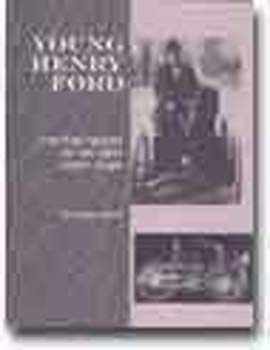
Young Henry Ford is a visual and textual presentation of the first forty years of Henry Ford—an American farm boy who became one of the greatest manufacturers of modern times and profoundly impacted the habits of American life. In Young Henry Ford, Sidney Olson dispels some of the myths attached to this automobile legend, going beyond the Henry Ford of mass production and the five-dollar day, and offers a more intimate understanding of Henry Ford and the time he lived in. Through hundreds of restored photographs, including some of Ford’s own taken with his first camera, Young Henry Ford revisits an America now gone—of long days on the farm, travel by horse and buggy, and one-room schoolhouses. Some of the rare illustrations include the first picture of Henry Ford, photos from Edsel’s childhood, snapshots of the interior and exterior of the Ford homestead, Clara and Henry’s wedding invitation, and photos of the early stages of the first automobile.

Celebrate and explore 100 years of MG cars with this impressive volume featuring expert commentary, historical images, period ads, and contemporary photography.
For many car enthusiasts, MG is synonymous with “sports car.” It is often credited with igniting a passion for European cars in postwar America at a time when roads were otherwise filled with the lumbering output of Detroit. In MG’s native England, the company’s cars filled roles from family transport to competition driving.
MG, as we think of it today, began in the 1920s, but its roots go back even further with a young William Morris. Initially working in the booming bicycle trade, he eventually branched into motorcycle and car repair with the fledgling Morris Garage (hence, MG) in 1907. By the mid 1920s, the successful Morris Garages was in a position to begin manufacture of its own cars under the MG name.
MG grew significantly in the years before World War II, building and racing its classic Midgets and Magnettes. World War II provided challenging times for the company as it did for the UK and much of the world. In the postwar period, a focus on sales outside England, and particularly in the United States, both defined MG’s product line and ensured its success. Legendary cars followed, including MG TC, TD, and TF followed by thoroughly modern MGA, MGB, MGB GT, and Midget. Magnettes and the 1100 offered options for those wanting sedans and more practical cars.
MG ownership moved through a number of UK companies in the postwar period as well as ownership by BMW and today’s SAIC, a Chinese-based company through which it operates as MG Motor. Highlights along the way included the MGB GT V8, MG Metro Group B rally car, and MGF. Based on its latest state-of-the-art EV platform, MG will soon launch an all-new roadster coming full circle over its century in business.
Authored by marque expert David Knowles, The MG Century: 100 Years of Safety Fast! is a fitting celebration of one of the automotive world’s oldest and most beloved brands—and a must-have for every car enthusiast.
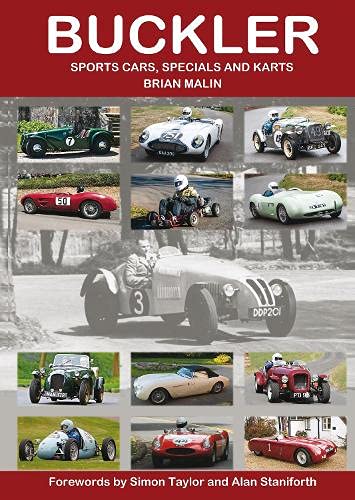
Although they were born 18 years apart, Derek Buckler and Colin Chapman were contemporaries when it came to designing and building ground-breaking sports cars in the late 1940s and early ’50s. They had much in common. Both were innovators, especially in areas of chassis design and improving the handling characteristics of their cars. Both founded successful companies and both died relatively young, Chapman in December, 1982, at the age of 54, and Buckler in 1964 at just 53 years of age. Yet, while Chapman’s Lotus went on to achieve worldwide fame, the name Buckler remains comparatively little known.
Special building was popular in the 1950s, mostly using ‘donor’ chassis from Austin 7 or Ford or simple ‘ladder’ frames but Buckler offered a multi-tubular space frame which was both stronger and lighter and, moreover, available in different models to suit different applications. He was also always ready to adapt his products to his customers’ requirements. In all of this, Buckler’s aim was to provide the impecunious enthusiast with a versatile sporting vehicle which could be used as daily transport during the week and, at weekends, in a wide range of motor sporting events from trials and driving tests to out and out racing. Often, however, the resulting Special would carry a name that concealed the Buckler contribution and a major part of the significance of Malin’s book and the vast amount of painstaking research put into it by its author is that much of that contribution is now revealed.
Buckler also, of course, made a range of complete cars starting with the versatile Mk5 and 6 and going on to encompass DD1 and DD2 with De Dion rear ends and the BB100 with backbone chassis introduced considerably before Lotus’s Elan and their other similarly based models. When karting became popular in the early 1960s, Buckler’s space frame technology found another application for which it was ideal and it became a major player in this burgeoning branch of motor sport. Buckler was also successful with its range of accessories including engine and transmission components and most notably its much admired close-ratio gears.
Brian Malin, the author, first owned a Buckler car in the 1970s and today competes in his Mk 5 in hill climbs and other events. He is an active member of the Buckler Register as well as the British Historic Kart Club and is often to be seen racing or demonstrating his Buckler kart so he is well placed to compile this comprehensive history of all things Buckler. It was first made available in loose-leaf form as long ago as 1990 but this is its first publication as a fully-fledged book, revised, updated and with additional material. Chassis design guru – and Buckler owner – the late Alan Staniforth provided the original foreword and this has been updated and included along with a new foreword by commentator and doyen of motor sport journalists, Simon Taylor.
The fourteen chapters begin with ‘Buckler and the Company’, cover the production and racing cars with some individual histories, the Buckler accessories including one chapter on the badges alone, overseas distribution – New Zealand was a particularly strong market for Buckler – and a fascinating section on the car advertisements before going on to cover the kart story in similar detail. The same number of appendices include reproductions of road tests, articles written by Derek Buckler, specifications of close-ratio gears and Buckler-tuned Ford engines, kart track tests and even one on Buckler letterheads. Malin’s work is truly encyclopaedic and therefore remarkable value for money not just as a reference on the Buckler marque but for its entertaining insight into the world of amateur motor sport of its time. The hundreds of illustrations range from reproductions of high quality contemporary and recent photographs to some admittedly lower quality originals, some of them obviously retouched to improve clarity, whose inclusion is well justified for their essential contribution to the Buckler story.
Brian Malin is to be congratulated for his perseverance in finally bringing to publication a book which is, to all intents and purposes, the full Buckler story.
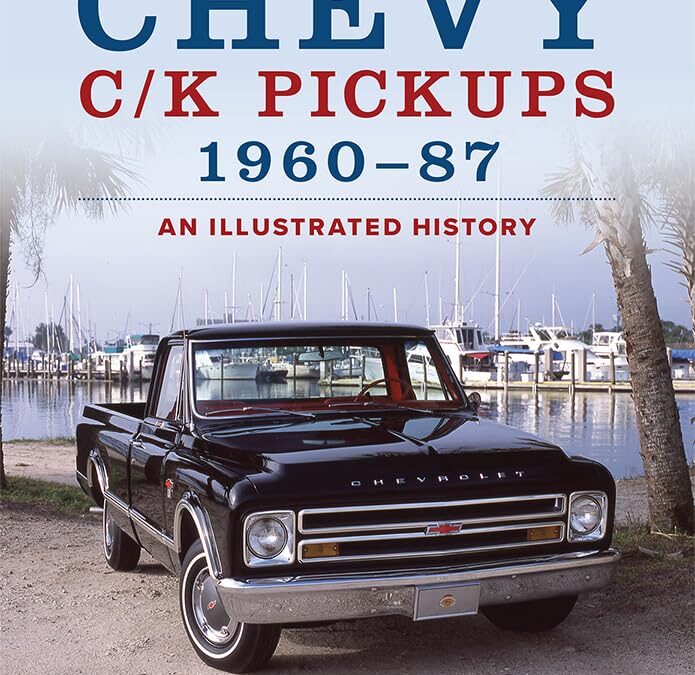
For uninitiated readers—or those too young to recognize a Grateful Dead song—Chevrolet’s C/K coding denotes model year 1960’s two new pickup lines: C for conventional two-wheelers and K for the company’s brawnier 4X4 counterparts. Showcasing many truck market milestone moments, the lengthy C/K tale recounted in this book encompasses three generations: 1960–66, 1967–72, and 1973–87. The first-generation C/K was launched in the fall of 1959 as a 1960 model and featured many firsts—the most significant of these were a drop-center ladder frame that allowed the cab to sit lower than ever before and an independent front suspension that gave the trucks an almost car-like ride. The second-generation C/K debuted in 1967, at which point GM began adding comfort and conveniences to a product that had previously been for dirty work only. The gen-2 trucks have proven extremely popular with collectors thanks to the attractive styling and excellent driveability. The third generation was unveiled in 1973 and produced through the end of 1987 and enjoyed a total restyling. Due to a relatively smooth appearance that encouraged better aerodynamics and higher fuel economy, these trucks were promoted as the “Rounded Line.” The first three generations of Chevy’s popular C/K pickups are the most popular, affordable, and collectible pickups on the market today. High production numbers mean used parts are easy to find, and there is a large aftermarket for reproduction parts.
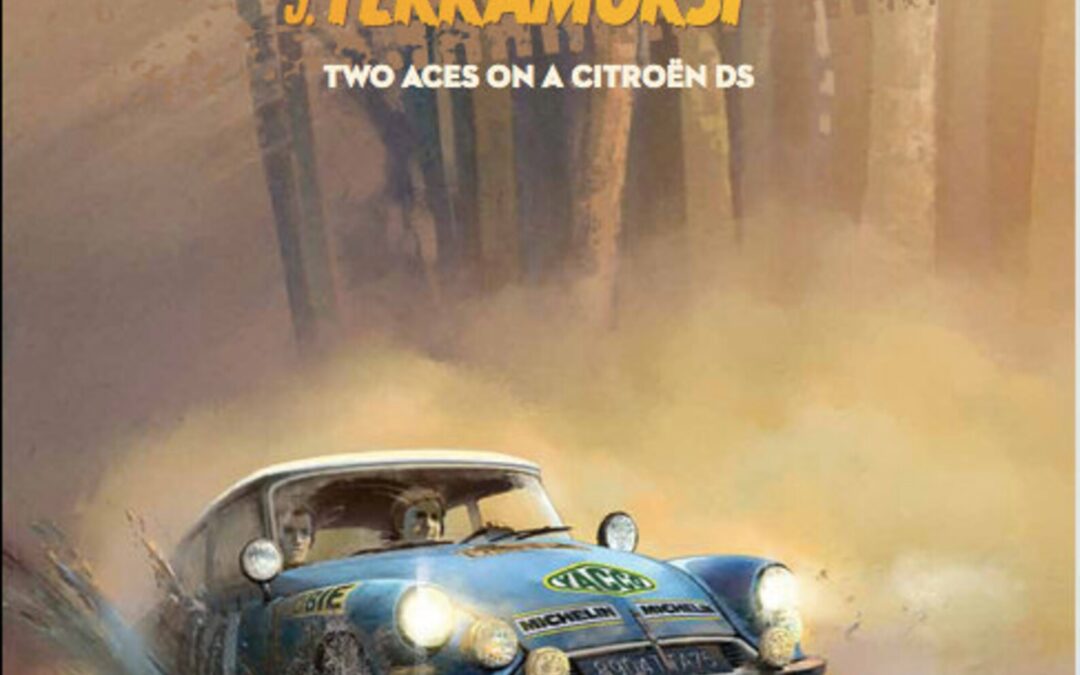
The 2nd graphic novel by Bob Neyret, this time his famous collection of rally adventures with the most faithful of his companions: Jacques Terramorsi.
English version of the hit comic book “PAIRE D’AS FOR A DS”, special edition YACCO 100 years
Invited by D.S , the new brand, for the inauguration of the Peking D.S SHOP on the 60TH anniversary of Citroen DS in 2015, Rally driver Bob Neyret meets, on the flight, Sophie a young motor sport journalist who seems to know nothing about the golden age of the D.S, nor the close link between the driver and his car. He begins telling her about his life through very original anecdotes, from his early days in France to the major international rallies.
But young Sophie can’t believe her ears … But who are really this famous Bob and his Terra, his co-driver?
See for yourself!

Here is the officially licensed anniversary celebration of the world’s longest continuously published and best-known automotive magazine.
HOT ROD Magazine: 75 Years celebrates the stunning content that has been created and published by the magazine’s staff in all or parts of nine decades. Witness how HOT ROD has been on scene for the entirety of the postwar performance movement with photographs and articles detailing dragsters, roadsters, slingshots, Funny Cars, coupes, customs, lead sleds, muscle cars, and their builders and owners.
Take a look back through pages that have captured the imaginations of gearheads nationwide by featuring the works of customizing greats like Ed “Big Daddy” Roth, Von Dutch, and George Barris, to name a few. There’s also a look at the great journalism of such hot-rodding legends as Gray Baskerville, and the creations of builders like Pete Chapouris, Boyd Coddington, Steve Moal, Roy Brizio, and Chip Foose—complete with decades of archival black and white and color photographs of the cars and personalities that comprise hot rodding history.
In the late 1940s, a young photographer and Army Air Corps veteran named Robert E. Petersen astutely noted the rapidly growing hot rod scene in Southern California. Buoyed by war veterans with tech savvy, disposable income, and a need for speed, the hot-rodding hobby was without much in the way of informational publishing. In a brilliant stroke, Petersen stepped into the void in 1948, launching HOT ROD magazine. Petersen Publishing would grow into a worldwide media empire featuring several publications. Today, HOT ROD magazine endures as one of the most iconic enthusiast publications ever.
HOT ROD is not simply a magazine—after 75 years, it’s still the magazine of automotive enthusiasts, known and appreciated the world over. This is the definitive and officially licensed look back at that influence.

Space Race 2.0 is the only authoritative photographic history of the efforts of private companies—often alongside NASA—to accelerate humankind’s exploration and understanding of the final frontier.
The private space sector is growing tremendously. The industry’s consensus leader, SpaceX, headed by outspoken billionaire Elon Musk, is today worth an estimated $74 billion. And SpaceX and its chief competitors, Blue Origin and Virgin Galactic, are taking on more roles—flying cargo, supplies, and astronauts to outer space. Space Race 2.0 tells their story with expertly written text by science journalist Brad Bergan and stunning photography of the spacecraft, key players, and facilities in California, Texas, and Florida.
In the 1950s and ’60s, the first Space Race pitted two political ideologies against one another: either Communism or Capitalism would prove superior. Ultimately, the US landed on the moon, the race’s crowning achievement. Now, more than a half-century later, the Space Race has pivoted from a contest between ideological rivals to private aerospace firms competing for contracts.
Today, rather than symbolic goals motivated by patriotism, the defining success of a launch system extends beyond engineering and science to image and ROI. Founded in 2002, SpaceX’s trajectory was determined by Musk’s realization that he could achieve higher profits by vertically integrating—manufacturing his own rockets and spacecraft—rather than relying on third parties. The decision was prescient, resulting in a state-of-the-art headquarters in Hawthorne, California, and a series of stunning achievements.
Space Race 2.0 follows the development of commercial space exploration to the present. While tentative first steps in private ventures are covered, such as those by Space Services Inc. and Orbital Science in the 1980s and ’90s, the focus is on today’s major players: SpaceX, Blue Origin (headed by Amazon founder Jeff Bezos), and Virgin Galactic (founded by Richard Branson). While examining the hardware, Bergan also explores such considerations as the importance of design-forward equipment and the endgame: what ultimately is “in it” for firms at the forefront? Natural resources? NASA and ESA contracts? Commercial travel? Communications? And what legal boundaries, if any, restrain corporate interests in space?
Space Race 2.0 is the ultimate visual look at this relatively young industry, looking back at recent remarkable decades—and ahead to what the future might bring.

Journallist and broadcaster Andrew Marriott writes with a light and humorous touch about a multi-faceted career covering some six decades.
He reckons he was the youngest ever person to report a Formula 1 race for a national publication and now the oldest person to regularly report from the pit lanes of Le Mans, Daytona and Silverstone.
He has covered every aspect of car and bike racing from Formula 1 to NASCAR as well as World Championship motorcycle racing plus inshore and offshore powerboat racing. Along the way he has interviewed thousands of competitors and, indeed, show business personalities . He says that he has interviewed or worked with every Formula 1 World Champion bar Farina, Ascari and Hawthorn.
He has been driven across Buenos Aires by Fangio, starred in a hilarious TV blooper episode with Mario Andretti, judged competitions with James Hunt, provided a flat floor for Jody Scheckter to sleep on, played charades with Jochen Rindt, persuaded Denny Hulme to go truck racing, covered up for Alan Jones after an altercation with a van driver and door-stepped Alain Prost as he came out of a Monaco portaloo. Ayrton Senna secretly signed his Lotus contract in front of Andrew but subsequently stood him up when the Brazilian decided that taking a ride in F16 jet was a better option than a Marriott interview.
Add to that ghosting road tests and much more from motor cycle world champion Barry Sheene, working with George Harrison on a sponsorship deal and for 25 years interviewing the Le Mans 24 Hour winners at the end of the great race. He says he is not sure how many times he has covered the French classic but at least 50 and he has worked at over 130 different race tracks. He came up with the idea of a feature film about Steve McQueen which premiered at the Cannes Film Festival and is currently working on a follow-up.
Add to this a career in sports management and sponsorship embracing such events as the Hong Kong-Beijing Rally, various major Truck Races and the Birmingham Superprix. He has launched racing cars everywhere from London’s Albert Hall to a former carpet warehouse in Didcot. Add to that a brief career as a rally co-driver which included winning internationals in South Africa and the UK and finishing up stuck in a mud hole in Paraguay.
So he has plenty to write about and he says he has enjoyed nearly all of it all but as the title suggests – Is There Much More of This?
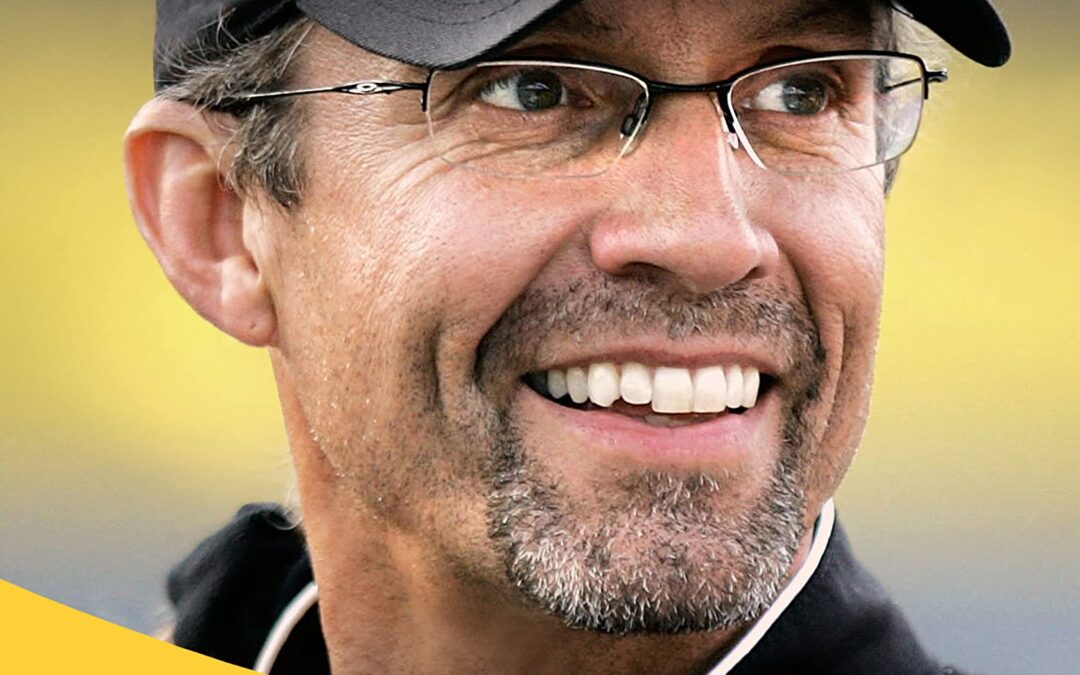
Stock-car racing star, country singer, and sports broadcaster Kyle Petty shares his familial legacy, intertwined with NASCAR’s founding and history, in Swerve or Die―written with Pulitzer Prize-winner Ellis Henican, the New York Times bestselling coauthor of In the Blink of an Eye.
“Born into racing royalty. The only son of NASCAR’s winningest driver ever. The grandson of one of the sport’s true pioneers. The nephew of our very first Hall of Fame engine builder. It’s quite a family to represent, and through it all, I’ve somehow managed to keep being Kyle.”
Kyle Petty won his very first stock-car race, the Daytona ARCA 200, in 1979 when he was eighteen. Hailed as a third-generation professional NASCAR racer, he became an instant celebrity in circles he had been around all his young life. Despite being the grandson and son of racing champions Lee Petty and Richard Petty, Kyle didn’t inherit innate talent. Working in his family’s North Carolina race shop from an early age, he learned all about car mechanics and maintenance long before he got behind the wheel. And although Kyle continued the family business, driving “Petty blue” colored cars emblazoned with his grandfather’s #42―a number once used by Marty Robbins―his career took a different route than his forebears’.
In Swerve or Die: Life at My Speed in the First Family of NASCAR Racing, Kyle chronicles his life on and off the racetrack, presenting his insider’s perspective of growing up throughout the sport’s popular rise in American culture. In between driving and running Petty Enterprises for thirty years, Kyle took some detours into country music, voiced Cal Weathers in Pixar’s Cars 3, and started his annual motorcycle Kyle Petty Charity Ride Across America. And when his nineteen-year-old son Adam, a fourth-generation racing Petty, tragically lost his life on the track, Kyle founded Victory Junction, a camp for children with chronic and serious medical conditions in Adam’s name―with help from Academy Award-winning actor and motorsports enthusiast Paul Newman.
Filled with NASCAR history, stories of his family’s careers, and anecdotes about some of stock-car racing’s most famous drivers, Kyle’s memoir also tackles the sport’s evolution, discussing how welcoming diverse racers, improving car and track safety features, and integrating green technology will benefit NASCAR’s competitors and fans in the future.

This book on a theme never before addressed is a tribute to the Sleator family, Franco-British family, as well as to all employees, partners, friends and customers of the Franco-Britannic Autos Ltd who, during these 10 years of the import, have promoted the extraordinary image of Ferrari in France…
Certainly the most beautiful Ferrari period in France !
The Franco-Britannic Autos Ltd, thanks to Walter and his son Donald Sleator, imported the most beautiful cars in the world on French soil from 1933 to 1989 for their most demanding customers.
Exclusive importer since 1933 in Paris of the two prestigious British brands Rolls-Royce and Bentley, then importer Rover (and Land Rover), Franco-Britannic Autos Ltd from the autumn of 1958 becomes the first exclusive Ferrari importer in France.
The Franco-Britannic Autos Ltd has experienced this new generation of buyers, the “Nouvelle Vague” as sung in one of his songs a certain Richard Anthony, young film actors, writers, and other artists, businessmen, industrialists … all needed and wanted to stand out by associating their image with that of exceptional automobiles and more particularly Ferrari.
Celebrities such as Jean-Paul Belmondo, Yves Montand, Lino Ventura, Françoise Sagan, Roger Vadim, Mylène Demongeot, Johnny Hallyday, Alain Delon, Claude Francois and many other stars were at one time clients of the Franco-Britannic Autos Ltd. The art of owning a road Ferrari, a very dynamic image, is considered a symbol of professional and social success.
The first Ferrari commercials in France by the FBA Ltd, our French stars of the “Yé-Yé” era, all the Paris Motor Shows, All Ferraris destined for the Marshall during the 24 Hours of Le Mans, piloted by Donald Sleator, then an official pilot until 1967.
There will also be a great tribute to Pierre Noblet with unpublished documents, Sylvain Garant…
Preface and anecdotes of Donald Sleator.
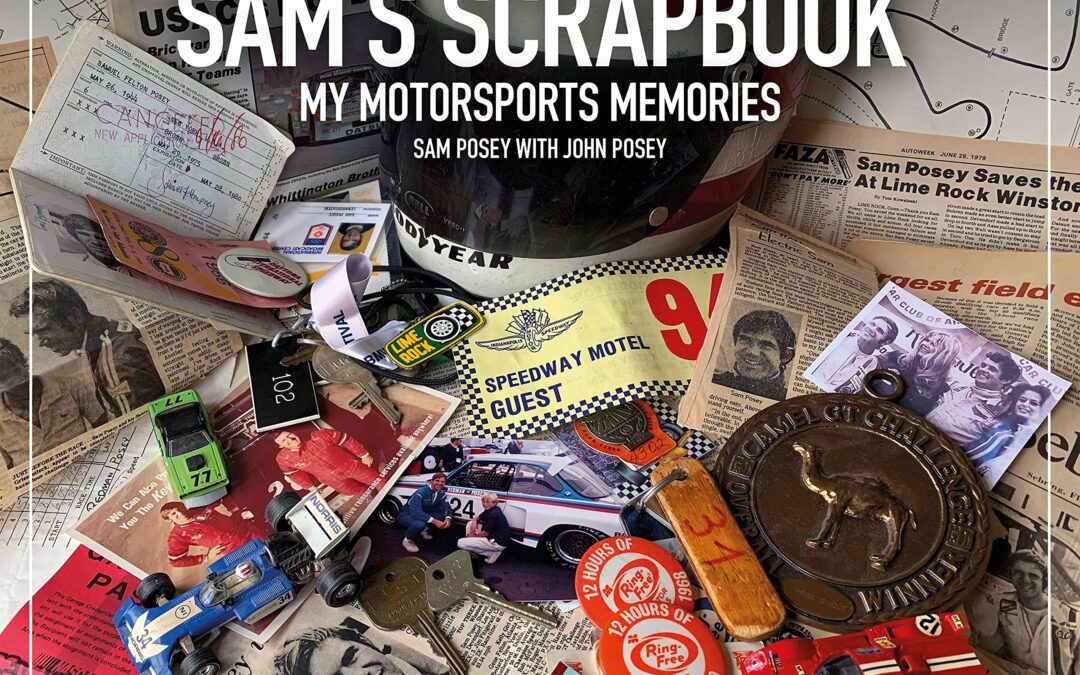
Sam Posey raced a huge variety of sports cars, saloons and open-wheel machines in numerous racing arenas — Can-Am, USRRC, Trans-Am, IMSA, Indy, NASCAR, Formula 5000 and Formula 1 — against rivals and friends such as George Follmer, Parnelli Jones, Mark Donohue, Peter Revson, Dan Gurney, David Hobbs and Brian Redman. Sam’s Scrapbook gives a first-hand account of a romantic era in racing, through pictures no one has seen and stories no one has heard. Running alongside the images, Posey’s commentary is fascinating and thoughtful, and in turns both amusing and emotional.
- Sam’s early days: racing around his mother’s house on a farm in Connecticut against his friend John Whitman.
- The start of his career: driving at Lime Rock, his local track, under the mentorship of John Fitch; a ride as the then-youngest American at Le Mans, with a Bizzarrini in 1966.
- Can-Am: racing against John Surtees, Bruce McLaren and Jim Hall in this famous “anything goes” sports car championship with a car he and Ray Caldwell designed and built.
- Trans-Am: competing in this spectacular saloon series during its golden age, first for Roger Penske and then as a factory driver for Dodge, against George Follmer, Parnelli Jones and Swede Savage.
- Later years at Le Mans: finishing third overall in a Ferrari 512 M with the North American Racing Team (NART) team in 1971; driving the first BMW 3.0 CSL ‘Art Car’ in 1975, featuring a paint scheme by American sculptor Alexander Calder.
- Open-wheel racing: a duel with Dan Gurney in the USAC Championship, finishing fifth at Indy in 1972; two drives for John Surtees in Formula 1; battling his friend and rival David Hobbs on the track and off in Formula 5000.
- Even more variety: three years of off-road adventures in the Baja 1000; rides with the BMW factory team at Sebring and Daytona; and his late career in the IMSA championship with actor Paul Newman and Brian Redman.
This is an unusual and engaging memoir by one of America’s best-loved racing heroes and will appeal to all motorsports enthusiasts.
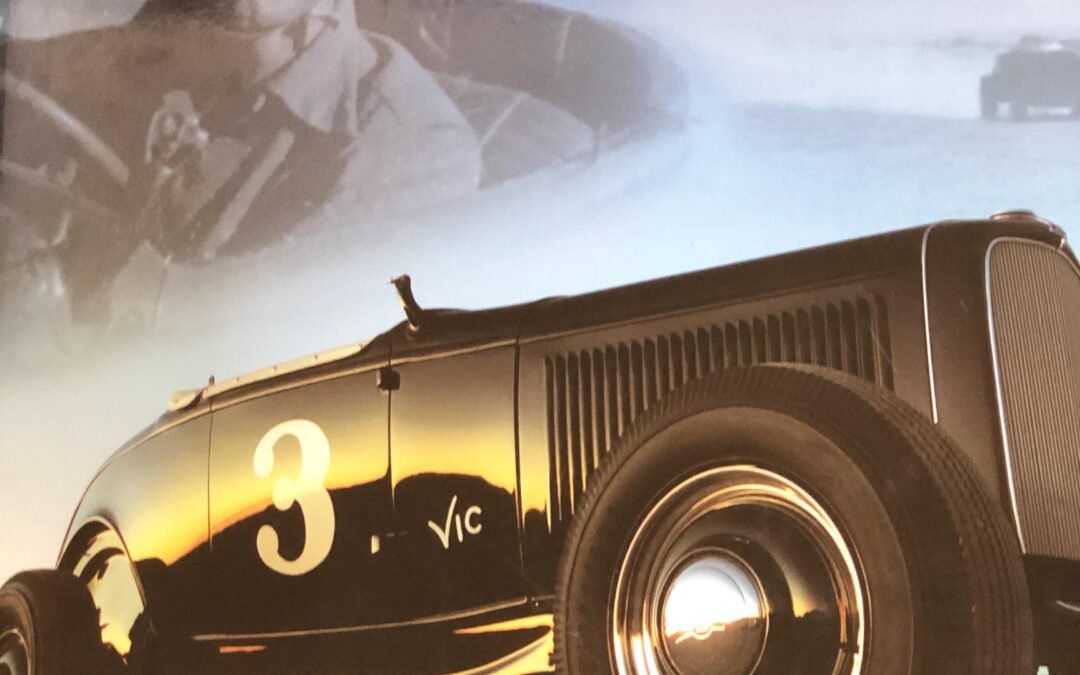
SIGNED to Phil Hill by Vic Edelbrock and Tom Madigan
Tom Madigan, with foreword by Benny Parson, NASCAR champion. The Edelbrock Corporation emerged from a young mechanic’s dream in Southern California during the earliest years of the American love affair with the automobile. One of the central figures of the hot rod culture that began before World War II and blossomed after the war, Vic Edelbrock, Sr. built his company around a simple philosophy: never overextend yourself, and never put your name on a product that hasn’t been tested and proven true. When Vic Edelbrock, Jr. took over after his father’s death, he stayed true to the family philosophy while incorporating progressive marketing plans to grow the company into a corporate giant. It is the last family owned automobile aftermarket company in the industry.Edelbrock Made in USA is the story of the company’s growth from a simple shop at the rear of a gas station to an American institution. It is at the heart of the history of the earliest drag racers and land speed racers, it is woven into the early days of NASCAR, and it flourishes today in the cars owned by enthusiasts and ordinary drivers across America who boast Edelbrock equipment. It is the story of a company whose influence not only helped shape automotive performance, but also led the automotive aftermarket industry in addressing and conforming to the clean air and safety regulations that have emerged over the past 35 years. And it is the story of an iconic family business that has preserved its values and its spirit of independence, creativity, philanthropy, and fun over three generations.

This is the story of Stephen South, a young British racing driver in the Seventies who seemed set for the glory that ultimately fell instead to rival Nigel Mansell.
Where one went on to become one of the nation’s most loved characters and the World Champion in 1992, the other’s career faded to a footnote in the cruellest circumstances.
This is a multi-faceted tale of struggle, success, disappointment, controversy, the continuous battle for funding and recognition and, ultimately, heartbreak.
Famously reticent even from his early schoolboy days as a British karting champion, South now talks openly about his career with first-time author Darren Banks. Many leading figures from the world of motor racing are woven into the narrative, which traces the turbulent era of the Seventies, the trials and tribulations which only strengthened South’s quiet yet indomitable resolve, and how close he got to his dream of racing in F1 after a winter of hugely promising test work with Colin Chapman’s Lotus team in 1979.
And for the first time he discusses with chilling candour the events that saw him forced to race in the North American Can-Am sportscar series instead of F1 in 1980, the horrific accident that befell him at Trois-Rivieres in Canada, his physically and emotionally painful recovery in a hospital on the other side of the world, his eventual return home and the subsequent trauma of having to deal with a career now broken and a life permanently altered.
Those key figures recall with affection – with a couple of exceptions – their experiences of working with or racing against this vastly underrated driver who, had he been dealt a better hand by fate, would surely be remembered alongside contemporaries such as Mansell and fellow World Champion Keke Rosberg as one of the leading F1 drivers of his era.
Profusely illustrated with numerous previously unseen photographs from professional archives and personal collections, THE WAY IT WAS – The story of a British racer who was too fast to be forgotten, is a gritty tale of the darker side of a sport when it fails to deliver a racer’s just deserts.
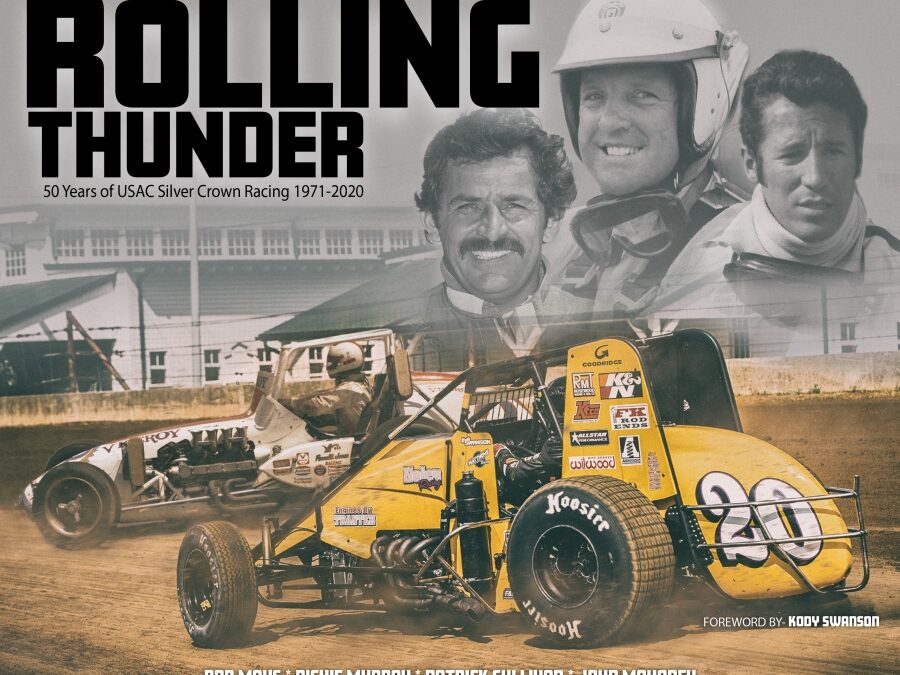
THE MOST COMPREHENSIVE REFERENCE EVER PRODUCED ON THE USAC SILVER CROWN SERIES
The combined work of four veteran motorsports journalists, ROLLING THUNDER covers the tumultuous history of the USAC Silver Crown series from its inception in 1971 through the 2020 season. From the days of Al Unser, Mario Andretti and A. J. Foyt, through the glory days of Jack Hewitt, to the reign of Kody Swanson, the big cars have continued to capture the imagination of fans both young and old. Key moments, stories and memories amassed over the past 50 years are captured here in word and stunning images.
· COMPLETE HISTORY OF 50 YEARS OF USAC SILVER CROWN RACING
· DETAILED SEASON SUMMARIES
· COMPLETE RECAPS FOR EVERY RACE
· MORE THAN 350 PHOTOGRAPHS
· HISTORIES OF NCRA AND PRA BIG CARS
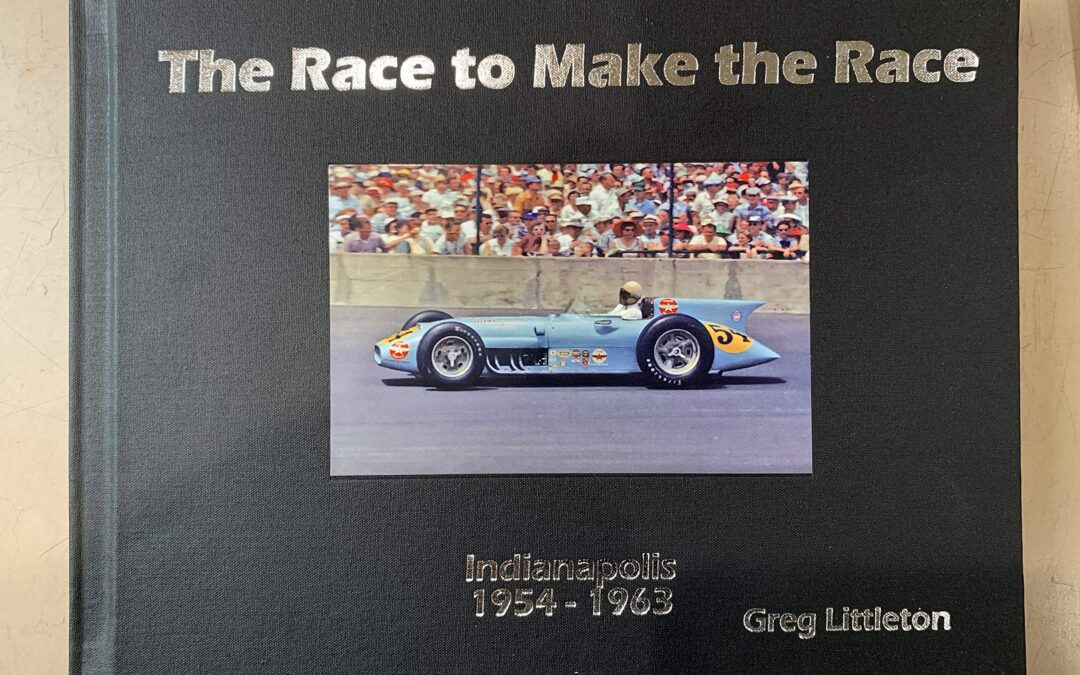
SIGNED
In his new book “The Race to Make the Race” Littleton chronicles a 10-year span (1954-1963) which was the peak roadster years at Indy and records what went on for every qualification attempt during this time period and each lap speed even if the attempt was yellow flagged. There is no mention of the races themselves as those results have been well-documented over the years.
Today’s 500 is lucky to attract 33 cars some years, but there was a time when the 500 really did have an actual Month of May and sometimes more cars went home than made the starting fields. Littleton’s book records by the actual time of day, weather conditions, attendance and all of the other happenings both on the track and in the Garage Area.
There are a lot of details in the book that you will never see anywhere else today. During the years in question the drama around the efforts to find speed just to qualify were often nearly as interesting as the actual race.
“While I was doing the Roadsters book I got the idea about doing a book on qualifications for the Indy 500,” said Littleton. “I got some qualifying information from the Speedway records when I was doing my first book. It was fun to do. I wanted to give the story on the successes and struggles each driver went through to try and make the Indianapolis 500 those years. The Bartholomew County Library was a big help in assisting me. They were able to get the microfilms from the Indiana State Library. I probably made 75 trips down to the local library to gather the information I needed.”
Littleton also mentioned two of the area’s standout racers at Indianapolis. Larry Crockett of Columbus who was the fastest rookie qualifier in 1954 and in the 500-mile race that year he ended up being the top finishing rookie over Pat O’Connor of North Vernon.
Littleton said Crockett, who died in a racing accident in Pennsylvania in 1955 right before he would have attempted to make his second Indianapolis 500, would have been a candidate to win the Indy 500.
“He was so young when he was starting out,” he said. “Nobody knows how his career would have turned out. If he had three or four years on him then I could have given you a better estimate on him. He was fast enough. There were some brave souls in 1954 and they said Larry Crockett was the best young driver in the United States.”
Like Crockett, Littleton gave his assessment on O’Connor who was killed in a first-lap accident in the 1958 race if he too could have won the Indy 500.
“Pat O’Connor definitely could have been an Indy 500 champion,” he said. “The legend of Pat O’Connor just keeps growing around here. You talk to guys and there is no doubt he was a natural. He was so smooth; everything came easy for him. He had the right head for it. He knew the days the car was good enough and the days it wasn’t.”
In documenting every lap of time trials during the 10-year span he chronicled there was one driver that stood out when writing the book was a young driver named Bob Scott in 1954.
“He had a good car in ’54 and on the fourth and final day of qualifying he was not in the show yet,” Littleton explains. “He jumped into a car that was not considered top-of-the-line equipment. He put three good laps together and they were going to be good enough to put him in the race, all he needed was one more consistent lap and he was in, but before he took the checkered flag he pulled into the pits and thus he didn’t qualify for the starting field. He apparently didn’t look at the flagman. He never did say why he pulled off.”
If Littleton had to pick a Mount Rushmore of Indy 500 champions his list would include: Bill Vukovich, A.J. Foyt, Wilbur Shaw and Al Unser Sr. Littleton also gave mention to 1963 winner Parnelli Jones.
“He was probably the least successful great race driver,” he said. “He would consistently beat Foyt in sprint cars, but he only won Indy once.”
On the sale last month of the Indianapolis Motor Speedway to Roger Penske, Littleton had this to say.
“Who else cares enough about racing and has the business acumen than Roger Penske?,” he asked. “He has everything that can make it work. Every decision he makes you may not like, but he has the best interest of the speedway in mind.”
Penske becomes the fourth owner of the track. The Hulman family had owned the track for 74 years.

When Bruno Sacco walked through the doors on his first day at Mercedes-Benz on 13 January 1958, it is highly unlikely that his Daimler-Benz colleagues could ever imagine that this nervous young man would not only revolutionize design but would change the way design and innovation connected with brand tradition forever.
Bruno Sacco is one of the most influential automotive designers of the late twentieth century; many models launched during his era now characterize the Mercedes-Benz brand. When Nik Greene asked Bruno Sacco to assist with this book, he replied humbly “No-one designs a car alone, and more to the point, I never, for one minute, wanted to. From the moment I became Head of Design, I put down my pens and became a manager of minds.”
With over 330 photographs and illustrations, this book includes an overview of the early days of functional vehicle design and the influence of safety on design evolution. The protagonists of Daimler-Benz design from Hermann Ahrens to Paul Bracq are covered. Design philosophy and innovation under Bruno Sacco is discussed along with the Sacco-designed cars and, finally, the Bruno Sacco legacy.






